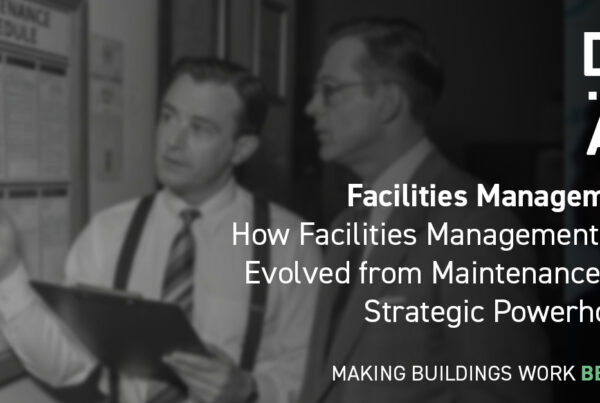
Uncovering Hidden Inefficiencies in Your Estate: How to Optimise Energy Use With BMS Insights
In the first two parts of this series, we explored how the Academy Trust Handbook (ATH) 2025 sets new sustainability duties for trusts, and how leaders can build a robust carbon reduction strategy. Now, we turn to the practical tools that can unlock those savings and efficiencies.
One of the most powerful, but often underused, tools is the Building Management System (BMS). Installed across many academy estates, a BMS can be a goldmine of insights into energy consumption and operational performance. Yet too often, these systems are not fully optimised, leaving trusts paying for energy they simply don’t need to use.
In this post, we uncover the hidden inefficiencies that quietly drain budgets and carbon targets—and explain how to use BMS insights to transform estate performance.
The Hidden Cost of Poor BMS Optimisation
A poorly configured or neglected BMS can waste a significant proportion of a trust’s energy spend. Common failures include:
- Heating schedules starting too early (e.g., setting boilers to fire up two hours before occupancy when the BMS has an optimiser resulting in the boilers heating the building up to 5 hours before occupancy).
- Sensors left in hand mode, bypassing automated controls.
- Unmonitored air quality, leading to over-ventilation and wasted heating energy.
- Existing optimisers ignored or overridden, meaning systems run inefficiently.
These issues might sound small—but they add up to thousands of pounds per year across a multi-academy trust.
Real Stats: The Scale of Wasted Energy
Industry data and on-site surveys reveal the true scale of energy loss from poor BMS control:
- £3.1 billion annual energy waste in non-domestic buildings: Poor energy management and inefficient systems in UK non-domestic buildings contribute to an estimated £3.1 billion in wasted energy annually. Source: Energy Consumption in the UK (ECUK), Department for Energy Security and Net Zero
- Up to 30% energy waste from poorly controlled heating systems: Inefficient heating controls—such as lack of zoning, poor boiler modulation, and manual overrides—can lead to up to 30% energy waste in UK commercial buildings. Digest of UK Energy Statistics (DUKES), DESNZ
- £1 in every £6 spent on energy in UK buildings is wasted: According to government estimates, around 17% of energy expenditure in UK buildings is wasted due to poor insulation, outdated equipment, and ineffective controls. UK Energy in Brief 2025, DESNZ
- UK schools are responsible for more than 50% of local authority carbon emissions, highlighting their significant role in public sector energy use and the potential impact of improved energy management. Carbon Trust
The Carbon Trust estimates that up to 25% of school energy costs, around £135 million annually, could be saved through low-cost interventions like LED lighting, heating controls, and better scheduling.
RAG-Rated BMS Optimisation Surveys
DMA use a RAG-rated survey process to help trusts quickly understand the state of their BMS. Each stage provides a clear, prioritised improvement plan:
- Validation
- Assess the current setup of the BMS across the estate.
- Confirm which systems are active, working, or bypassed.
- Identify gaps in monitoring and reporting.
- Rectification
- Correct critical issues such as faulty sensors, systems left in hand mode, or scheduling errors.
- Ensure heating and cooling systems are correctly aligned to occupancy times.
- Ventilation Optimisation
- Balance air quality with energy efficiency.
- Reduce over-ventilation without compromising health and comfort.
- Smart Tech Integration
- Introduce additional controls such as CO₂ sensors, occupancy sensors, lighting controls, or automated valves.
- Enable trust-wide dashboards for performance monitoring and SECR compliance.
This phased approach ensures trusts can make quick wins early while building towards longer-term optimisation.
Avoiding the Heating and Cooling “Deadband” Trap
One of the most common inefficiencies in schools is simultaneous heating and cooling—boilers and chillers running against each other. This often happens because deadband controls (the temperature gap between heating “on” and cooling “on”) are set incorrectly.
By adjusting these settings through the BMS, trusts can:
- Prevent wasted energy.
- Improve comfort levels.
- Extend the life of heating and cooling plant.
This is a simple yet high-impact adjustment that too often gets overlooked.
Why BMS Optimisation Is a Governance Issue
Under the ATH 2025, trustees and accounting officers are responsible for ensuring estates strategies deliver on carbon and energy management. BMS optimisation directly supports:
- Compliance with SECR and DfE sustainability strategy.
- Financial efficiency, freeing up funds for educational priorities.
- Reputational value, demonstrating visible commitment to sustainability.
A trust that fails to optimise its BMS not only wastes energy—it risks failing in its statutory duties under the Handbook.
Where to Start
- Commission a BMS survey across your estate.
- Rectify critical issues immediately—most can be addressed at low cost.
- Train estates teams in ongoing BMS monitoring.
- Build BMS reporting into your trust’s board-level sustainability updates.
Case Study: Unlocking Hidden Energy Savings with BMS Optimisation
How a BMS Survey Exposed 25% Wasted Energy and could potentially deliver £80k in Annual Savings
In a recent BMS survey we conducted for a large organisation, we found that 25% of energy was being used out-of-hours, when the building was empty. Without intervention, their annual energy costs were set to rise by more than 150% within two years. By reconfiguring time schedules, upgrading controls, and fixing faulty sensors, the organisation has the potential to cut consumption by up to 40% and avoid over £80,000 in unnecessary annual costs. With a payback period of just 1.8 ears, the investment could be self-funded by year two.
Download the case study here.
Want to see how much hidden energy your trust could save?
Book a BMS assessment with our team to start unlocking savings across your estate.
Read Part 4:
What about water and air — are they the missing pieces in your estates strategy?
In the final part of our series, we explore how Academy Trusts can take sustainability beyond energy management. Discover how to:
-
Reduce water waste and cut unnecessary utility costs
-
Improve indoor air quality to support pupil health and focus
-
Align with Academy Trust Handbook 2025 compliance on resource efficiency





